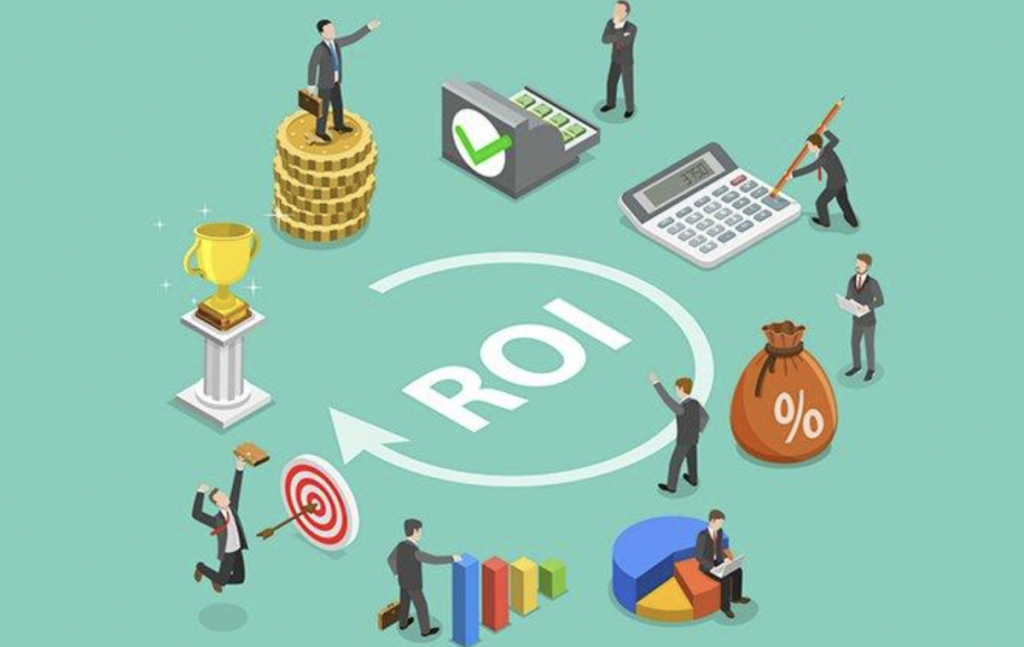The goal of every business is to be successful. While the definition of success may differ from company to company, being profitable is typically the overarching goal. When it comes to marketing your business, you’ll likely be using a range of platforms to reach your target audience. The more strategies you use, the more time and energy (not to mention money) goes into each one. That’s why it’s important to know what is worth the effort and what isn’t.
ROI, or return on investment, is a reflective metric. It’s when you look back on a campaign and see how the performance of it impacted your bottom line. Did your Facebook ad campaign move the needle for generating new leads? Or did your search engine ads drive new users to your sites? Put simply, the ROI is your campaign’s report card, an evaluation of how it did from a financial point of view.
Crossing your fingers and hoping that a campaign performs well isn’t a good strategy. While you may get lucky from time to time, that’s not the most efficient plan for your company. Here’s how to ensure your marketing strategy has a positive ROI.
1. Hire an Expert
No matter the size of your marketing team or level of expertise, there are always benefits to bringing in a professional. An expert has an understanding of which tactics have performed well in the past for similar brands. At the same time, they are on the cusp of the latest trends and should know which to pursue and which to pass on.
There are different types of experts to hire, but a growth marketing agency may be the best choice when it comes to your ROI. This type of agency can help you figure out which marketing techniques are actually going to make an impact. They look at your customer base, revenue goals, and overall market presence to come up with a comprehensive strategy unique to your business. And because they are educated in SEO, social media, content creation, PR, and more, they can really help your business grow.
Moreover, the right agency will recommend activations focusing on the entire customer lifecycle — from the first impression point to a sale. Rather than rely on gut instinct and guessing, they will look at hard data. They will work with you and your team to execute the appropriate growth marketing strategy and optimize them to ensure you’re getting the most bang for your buck.
2. Think Outside of the Box
The most memorable marketing campaigns tend to be the most unconventional. They go outside of the norm to attract attention and cause a buzz. Coca-Cola’s Share a Coke campaign encouraged a sense of community, prompting consumers to buy a beverage for a friend. Lean Cuisine’s Weigh In Campaign swapped traditional scales for how women really wanted to feel in their bodies. Thinking outside of the box can create lasting impressions, differentiating you from your competition.
When it comes to thinking out of the box, no idea is off the table. Bring your team together and start brainstorming ways for you to really stand out. This is a way to involve your entire team, while also encouraging creativity. Look at how past campaigns have done and try to improve upon them in new ways. Pushing the same ad creative to the same target audience isn’t going to help you find new consumers.
As far as ROI is concerned, thinking outside of the box can lead to more genuine connections with your audiences. Dove’s Real Beauty campaign is a prime example of bringing women from all backgrounds and sizes together, showcasing their individuality. This campaign sparked a sense of authenticity that other beauty brands have yet to actualize themselves. In turn, this type of campaign can increase brand loyalty and have a positive impact on your budget.
3. Be Personable
In a market full of competing brands, personalization matters. Consumers expect companies to think of them as individual, unique human beings. They want offers to be customized to their wants and needs. A marketing campaign that is personalized shows that your company is putting their customers first. Over time, this helps create a sense of brand loyalty and trust.
Thanks to technology and data collection, it’s easier than ever to know who your customers are and what your target audience wants. You can know where they are geographically located, what their hobbies and interests are, and when they’re likely to return to your site. Because of this, customers will become annoyed if they receive a promotion that doesn’t apply to them. In fact, according to SmarterHQ, 70% of millennials are frustrated when they receive irrelevant emails from brands.
Personalization, of course, goes beyond adding their name to a newsletter blast. Product recommendations can go a long way since they encourage future sales while also predicting what your consumer needs. Brands, such as Amazon, are also seeing benefits in personalized web pages. By knowing their audiences, they are able to highlight offerings that will resonate most to them. To identify these types of insights, it may be beneficial to adopt a communications software to get a better understanding of your consumer base.
Takeaways
Improving your marketing ROI means continually analyzing your results. You could have the most innovative, large scale marketing plan, but it may flop due to incorrect targeting. Or, you could see largescale results just by tweaking a few things on your social media ads. Measuring your campaigns will help you identify what is working and what needs to be optimized. Remember, not every marketing tactic will be a winning success; the key is knowing when to continue and when to pivot entirely.

